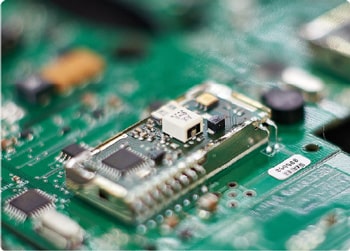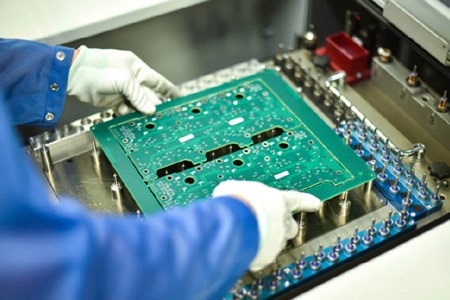Nitrogen reflow soldering in PCBAMake processing plant
Nitrogen reflow soldering has shown many significant advantages in PCBA processing. These advantages are mainly reflected in welding quality, component protection, production efficiency and cost control. Here’s a closer look at these benefits:

1. Improve welding quality
Prevent oxidation: Nitrogen, as an inert gas, is not prone to chemical reactions with metals. Reflow soldering in a nitrogen environment can significantly reduce the degree of oxidation of component pins, pads and solder during the soldering process. This helps improve the wettability and adhesion of the solder joints, making the welding stronger and more reliable.
Reduce welding defects: Nitrogen environment helps reduce defects such as voids and solder balls produced during the welding process, and improves the overall quality of welding. At the same time, due to the reduction of oxidation products, impurities on the surface of the solder joints will also be reduced accordingly, further improving the welding quality.
Improve the appearance of solder joints: Nitrogen reflow soldering makes the surface of solder joints smoother, without black spots, flux and other debris, and without defects such as spikes, pits, pores, exposed copper, etc., which improves the beauty and reliability of solder joints.
2. Protection components
Extended component life: Nitrogen reflow helps protect components from oxidative damage by reducing the level of oxidation during the soldering process, thereby extending component life.
Avoid component damage: During high-temperature welding, the nitrogen environment can reduce the deformation or damage of components due to thermal stress and protect the integrity and performance of components.
3. Improve production efficiency
Reduce downtime: Nitrogen reflow soldering systems usually adopt modular and flexible designs, which can reduce downtime and maintenance work and improve production efficiency.
Rapid cooling: Some advanced nitrogen reflow systems are equipped with efficient cooling modules, such as BOLW THRU (strong cold air) cooling modules, which can provide rapid cooling rates to meet the stringent requirements of lead-free temperature curves, thus shortening the production cycle .
4. Reduce production costs
Reduce the scrap rate: Nitrogen reflow soldering technology can reduce the scrap rate during the welding process and improve the product yield, thereby saving production costs.
Reduce the cleaning process: Since the degree of oxidation during the welding process is reduced, impurities on the surface of the solder joints are reduced, part of the cleaning process can be omitted, saving time and costs.
5. Wide application fields
Nitrogen reflow soldering technology has been widely used in many fields, including communication equipment (such as base stations, routers, switches, etc.), automotive electronics, consumer electronics (such as smartphones, tablets, laptops, etc.), aerospace and medical equipment, etc. field. These fields have extremely high requirements for welding quality and reliability. Nitrogen reflow soldering technology can meet these needs and provide high-quality welding solutions.
Nitrogen reflow soldering has many advantages in PCBA processing, and can significantly improve welding quality, protect components, improve production efficiency and reduce costs. Therefore, it has been widely used and promoted in the electronics manufacturing industry. The PCBAMake pcb assembly factory has introduced the latest 10-temperature zone nitrogen reflow oven, which can meet your high-standard PCB processing and manufacturing needs. Please feel free to keep in touch with us!







